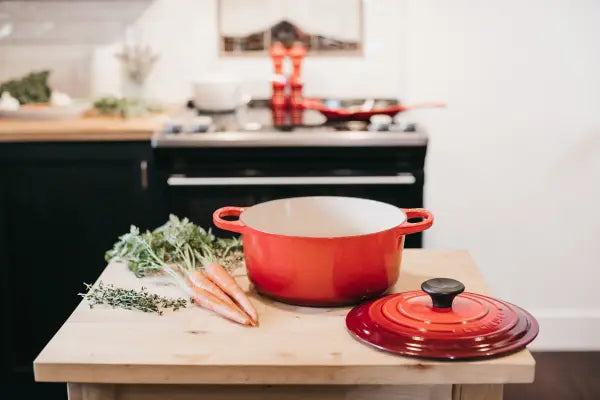When Can Babies Start Drinking Water? How It Fits into Infant Feeding Schedules

As the days are (finally!) getting warmer and with summertime activities on the horizon, you may wonder:
“When should my baby start drinking water?”
What may seem like a straightforward question, the answer involves a few important considerations. In this post, we’ll answer some questions you might have and talk about how to give your baby the best start!
- When babies are ready for water
- How to introduce it
- How much is appropriate
- What to stay clear of
When can babies drink water safely?
Usually by the age of 6 months, babies are ready to take their first sips. This is often around the time you may be starting solid foods as well. Before 6 months, babies get all of the hydration they need through breast milk and/or formula. These liquids provide not only essential nutrients and calories but also all of the fluid your baby requires, even on hot days.
Why you shouldn’t offer water too early
Risks of giving water to babies under 6 months
There are a few risks to giving water too early to babies that are important to know:
-
Electrolyte imbalance: Excess water can dilute sodium levels in the blood, potentially causing seizures or coma.
-
Reduced nutrient intake: Babies’ stomachs are small and water can fill them up easily. This can lead to a decrease in breast milk or formula intake and poor weight gain.
-
Risk of infection: Contaminated water can cause diarrhea and dehydration. Babies have developing immune systems that can make them more vulnerable to infections.
Safe water choices for your baby
What kind of water is best for infants?
In most areas, tap water will be a great option. If you’re unsure about your local supply or if you are using well water, you can have your water tested. In this case, your pediatrician will be a great resource if you have more questions.
💡 Some pediatricians may recommend boiling tap water and letting it cool before offering it.
Your pediatrician will also be able to tell you if your baby needs fluoride based on your local water supply. Bottled water can be used occasionally or if you are traveling, but make sure to avoid mineral water or carbonated options.

Why babies need water (eventually)
We know that water is essential for adults but we don’t always talk about the reasons why it is important or what role it plays in babies.
What water actually does for your baby’s body
Did you know water:
-
Helps regulate body temperature
-
Transports nutrients and oxygen in the body
-
Helps remove waste products
-
Keeps joints and tissues lubricated, which supports crawling and first steps
-
Supports blood volume and circulation
💧 A surprising fact: Water makes up about 75% of body weight in infants!
How to offer water in baby feeding schedules
When you are ready to give your baby their first experience with water, you can offer a small amount in an open cup or a straw cup (check out some of our favorites). This will be good practice for when your baby is older and will be drinking all of their liquids from a cup. This also helps develop their oral-motor skills.
Babies that drink water regularly from bottles may end up consuming too much and displacing their intake of important nutrients from food, formula, or breast milk.
✅ Offer 1–2 ounces at a time, limiting to a total of 4 to 8 ounces (1 cup) of water daily.
How much water can babies drink at this stage?
The first few times you offer your baby water, they may not seem to like it or they may cough and sputter. Don't worry, take a break and offer again at another time when your baby is relaxed and happy.
Learning to manage the faster flow of a cup or straw can take time. The early days are a little bit like offering solids, sometimes more about the experience and skill-building than hydration itself.
Babies should still be getting the majority of their hydration needs from breast milk or formula until they are 12 months old.
To give your baby regular practice, you can continue to offer small amounts of water with meals.
Water after 12 months: Setting healthy habits
As your baby gets closer to 12 months, water can be offered regularly throughout the day.
Making water readily available for your toddler is not only great for hydration now, but will help build life-long healthy habits.
🧃 The American Academy of Pediatrics recommends that toddlers get 1-4 cups (8-32 ounces) of water daily.

Can babies have juice, flavored water, or herbal teas?
Drinks to limit or avoid in infant feeding
It’s best to avoid drinks like:
-
Flavored water
-
Sweetened drinks with added sugars
Offering these beverages regularly may shape taste preferences later in life. Simple herbal teas such as chamomile or mint are likely fine. However, if your baby is on medications, check with your pediatrician first. A sip or two of plain sparkling water is also fine but shouldn’t replace regular water.
Tips for introducing water to your baby
-
🕒 Timing: Start around 6 months of age, unless your pediatrician advises otherwise
-
💧 Start small: A few sips at a time is plenty; don’t exceed 4-8 oz per day
-
🥤 Choose the right cup: Use an open cup or straw cup, skip bottles
-
🍽️ Make it routine: Offer water with 1-2 solid meals
-
🚫 Stick to plain water: Avoid juice, seltzer, or sweetened drinks
Final thoughts
Introducing water is an exciting and practical step in your baby’s feeding journey, and like most milestones, there’s room for flexibility. Start slow, follow your baby’s cues, and don’t stress if it takes a few tries. Whether it’s a sip from a straw cup or a tiny dribble down their chin, each moment is part of learning.

Written by Catharine Seiler RD
Pediatric Dietitian & Advisor at Bébé Foodie
Catharine Seiler is a pediatric dietitian with over 14 years of experience in both clinical and outpatient settings. She’s worked at Boston Children’s Hospital and now supports families daily at Lexington Pediatrics. At Bébé Foodie, Catharine lends her expertise to help parents feel confident about nutrition, from growth concerns to picky eating and food allergies. As a mom of two, she brings both professional insight and a real-life understanding of what feeding kids actually looks like.




Leave a comment